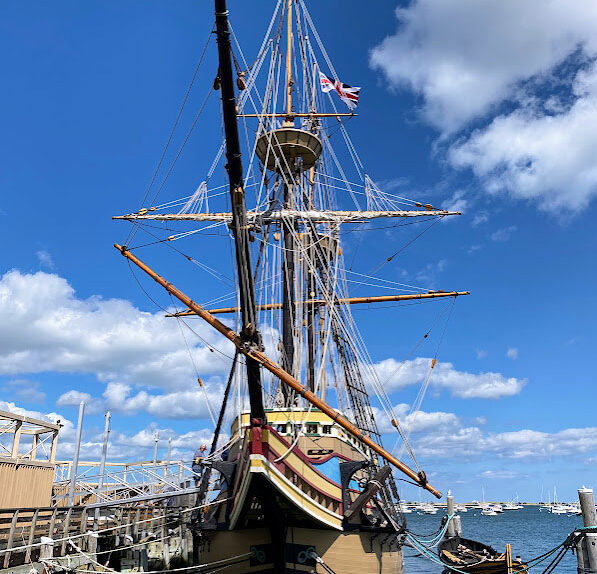Today was all about Pilgrims. I’ll start off with the Mayflower II ship we visited, a replica of the actual Mayflower used by the Pilgrims, build in England. Mayflower II is a reproduction of the original Mayflower, built in England around 1955, in a collaboration between Englishman Warwick Charlton and Plimoth Patuxet (the guy behind Plimoth Plantation, the museum associated with this town). Mayflower II was sailed from England in 1957 to NYC, recreating the original voyage across the Atlantic Ocean. After various visits and extensive repairs, the Mayflower II was taken to Plymouth, Massachusetts in 2013.
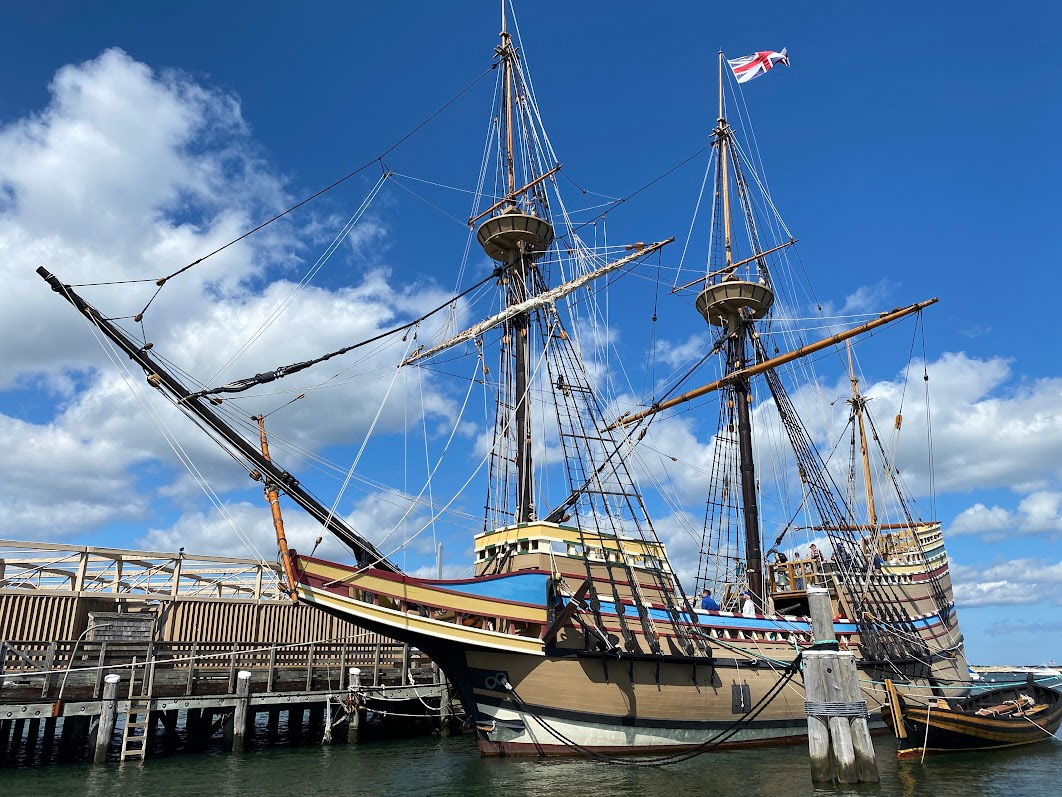
These old boats were so small. The sailors did not like the Pilgrims and made them all stay below deck. There were 102 passengers sharing a space about 58 foot by 24 foot. Click here more more about the Mayflower II.
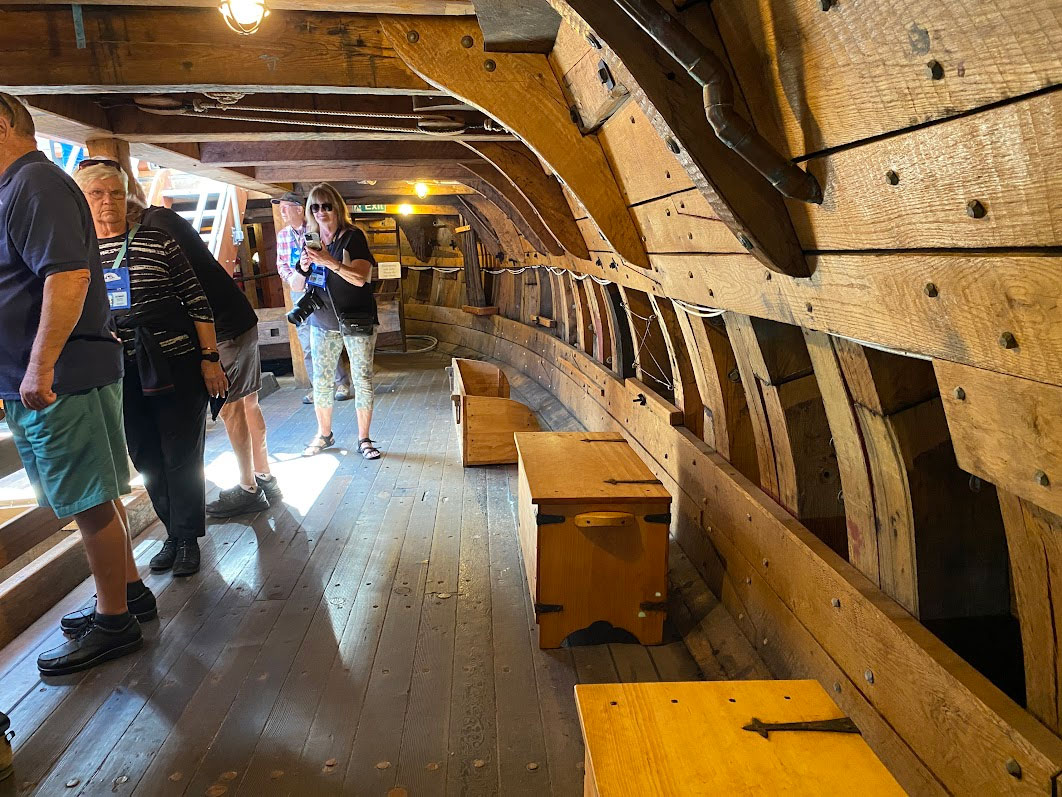
They say the Pilgrims actually landed on Cape Cod first, but moved to the Plymouth area because it was more favorable with water and cleared land. They took over abandoned Indian villages, abandoned because disease wiped out many of the Indians a few years earlier.
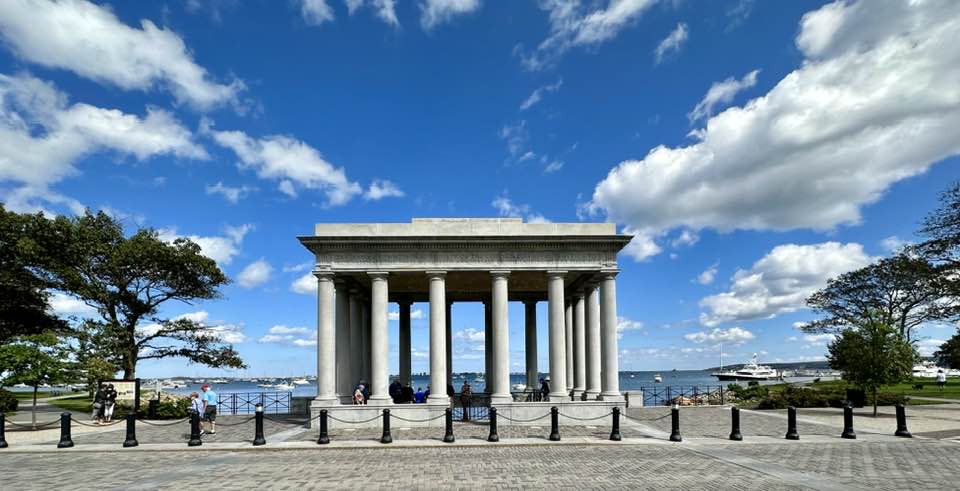
The actual Plymouth Rock is rather unimpressive. They do have an impressive structure surrounding it, but the rock at my campsite is much bigger than this one in Plymouth. It was said that many years ago, there used to be a hammer and chisel on-site so that tourists could chip off a piece of Plymouth Rock to keep as a souvenir.
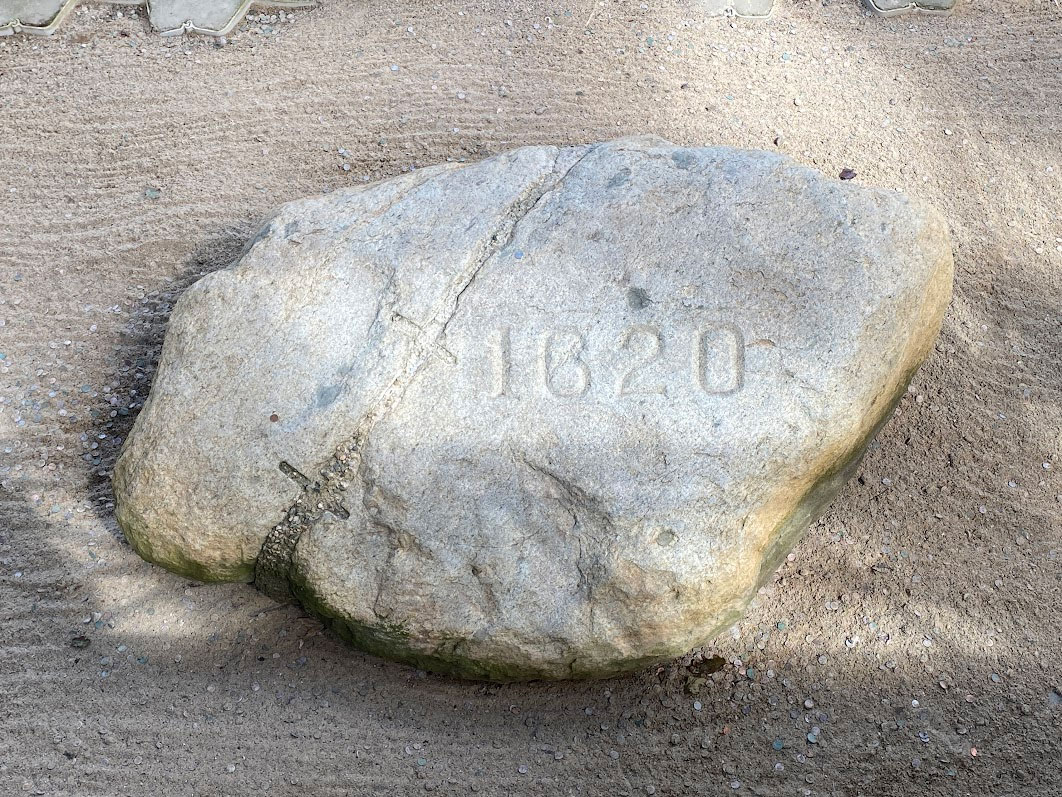
We visited Plimoth Patuxet Museum. Apparently in early documents, before spelling was standardized, Plymouth was spelled Plimoth.
This was quite an impressive museum with a large endowment, lots of land and helpful staff and many interpretive actors. On the walk to the Plymouth villiage re-creation, you pass through an Indian settlement. The Wampanoag were the Natives who used to live here and called the area Patuxet. However the village was empty when the Pilgrims arrived because a few years earlier a plague wiped out most of the inhabitants of this village. They used to live in these domed structures which were covered by bark in the winter, like this one is, and animal hides in the summer.
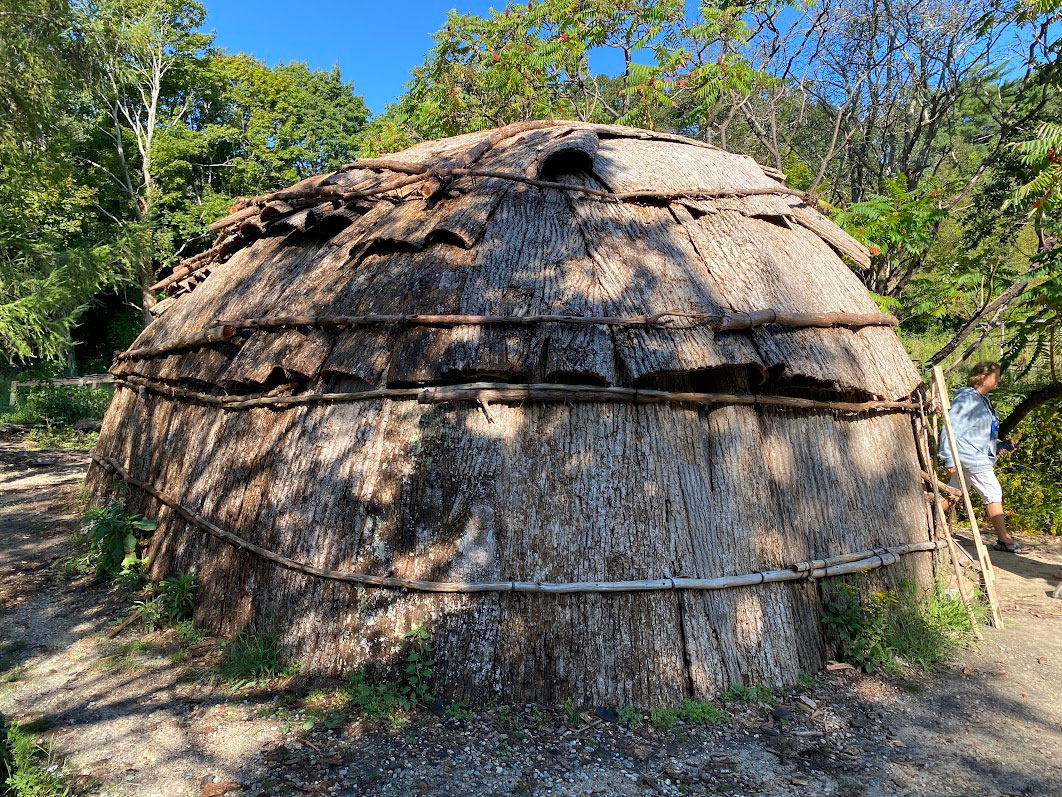
They moved about in canoes hollowed out of trees.

The settlement was built to depict life at around 1627, seven years after the Pilgrims arrived, because there wasn’t much when they first got there. By this time, the settlement was surrounded by a fence, and defended by a fort because Indians were already attacking the village. The fort had cannons and guns, but they also used the downstairs for meetings and church.
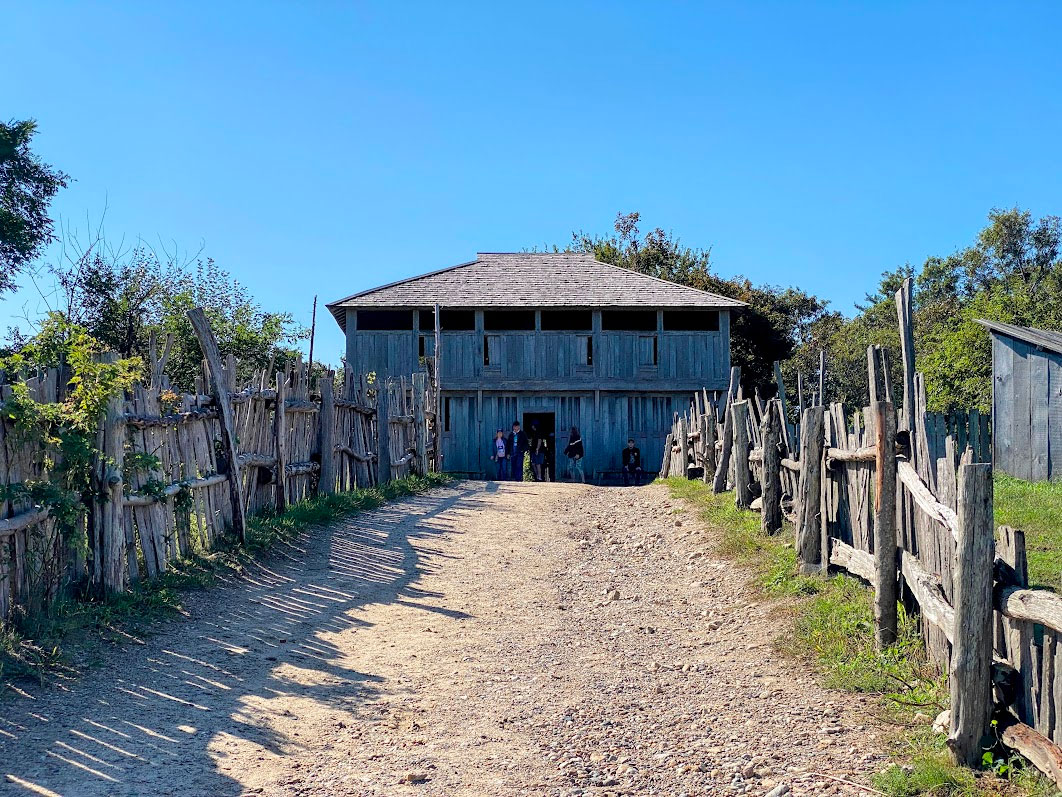
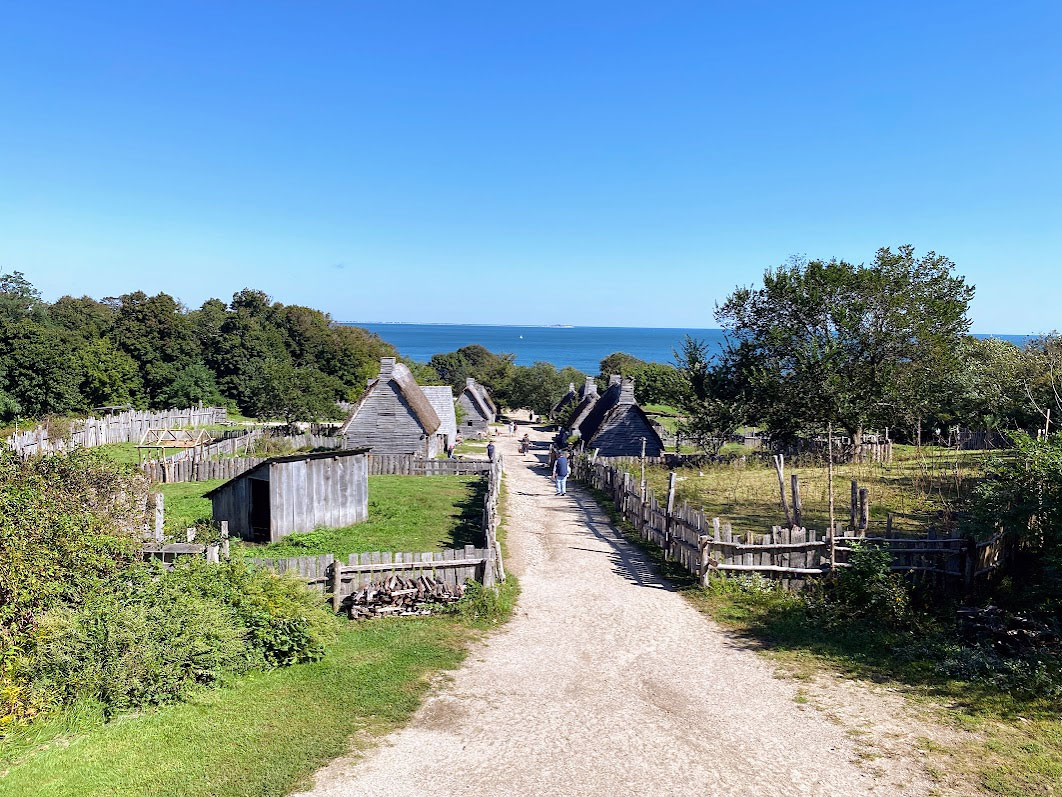
They build their houses much like England did – with lumber and thatched roofs.
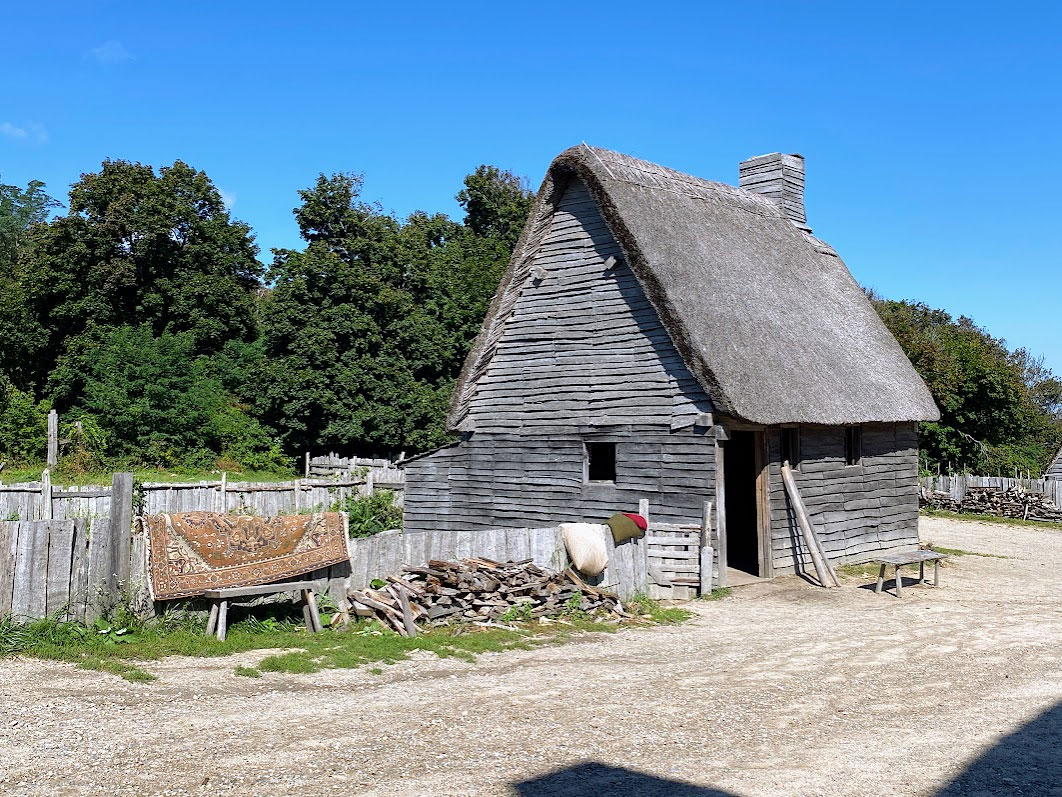
Most of the houses had a fire pit right on the dirt floor with a big open chimney in the roof. I was surprised that they quickly built fences sectioning off their yard from everyone else, given all the land that was surrounding them.

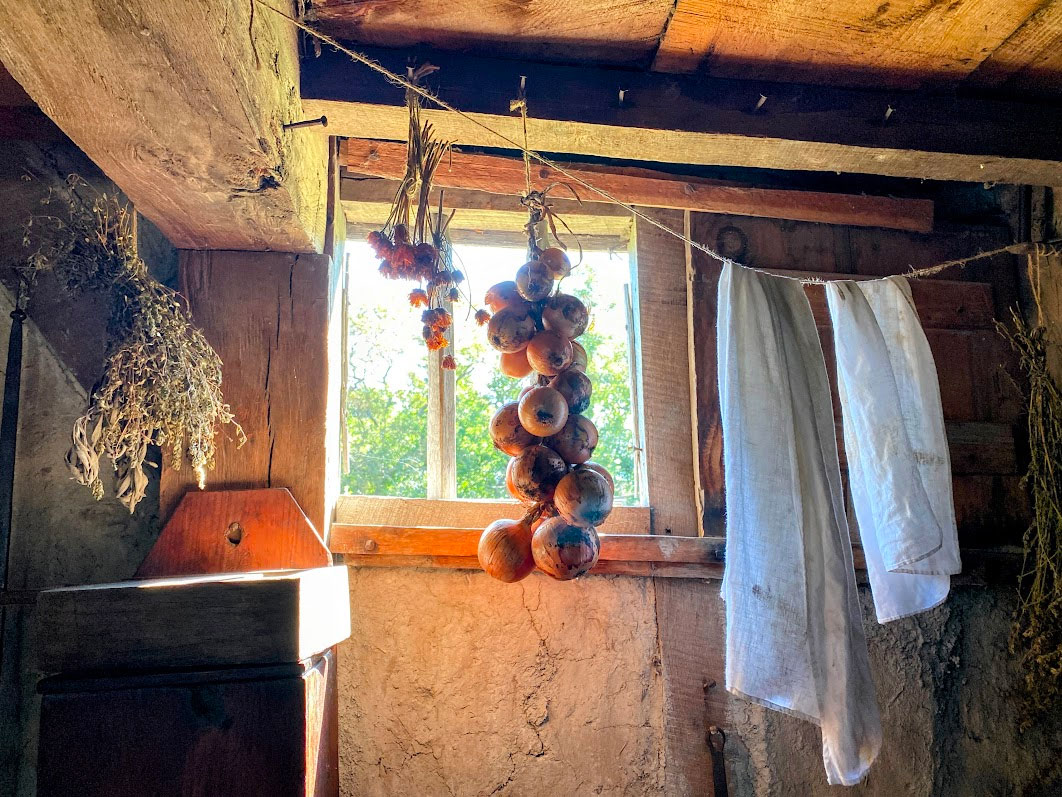
Around the village, there were several role players. Here are a few…

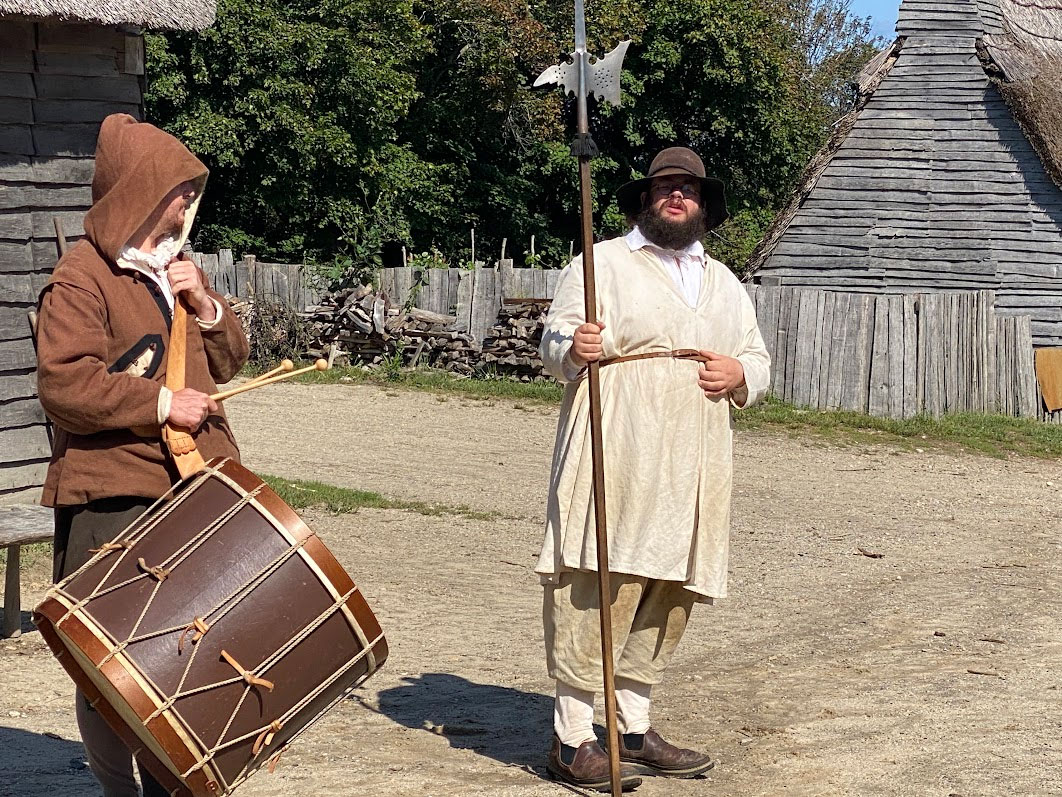
We had our lunch at the Plimoth Patuxet Museum and it was a traditional Thanksgiving dinner of turkey, stuffing, mashed potatoes, gravy, squash, cranberry sauce and pumpkin pie. Yum!
And one final part of the Plimoth Patuxet series of museums was the Plimoth Grist Mill. This building came later, around 1636. They still grind corn at this mill on Saturdays.

The final stop with the Forefathers statue.

Today I had a free day. I stayed at the campground to do laundry and catch up with things. This campground (Normandy Farms) is the largest campground I’ve ever seen. It has over 300 campsites. There is an indoor pool, 3 outdoor pools, 18 hole disc golf, golf carts, basketball, baseball diamonds, soccer, tennis, volleyball, horseshoes, bocce, shuffleboard, a fishing pond, bike course, and a dog park the size of a football field. I walked the perimeter and it was over 2 miles. As well as the campsites, you can rent cabins, shelters, yurts and this interesting tent with a front and back porch. I’m impressed.

